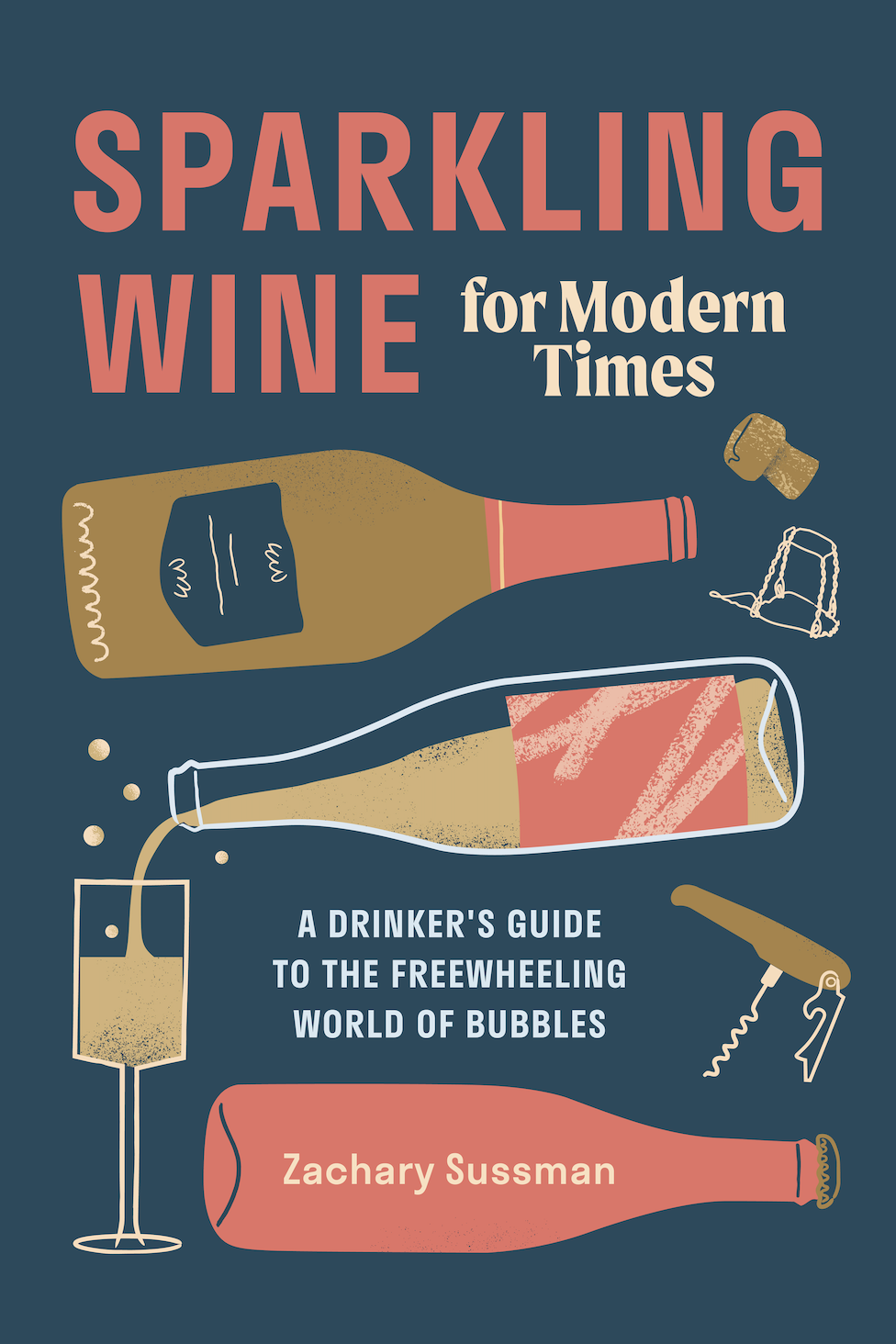The Epic Wine List Is Not Dead
JUNE 12, 2015 | Story: ZACHARY SUSSMAN | Illustration: NATALIE K. NELSON
Welcome to "The List," a column exploring the country's most notable wine lists. This week, New York columnist Zachary Sussman visits Rebelle, Patrick Cappiello's new Bowery wine destination with an epic 81-page list
I'm still not interested in wearing a suit,” says Patrick Cappiello, the partner and beverage director of New York’s most ambitious new wine destination, Rebelle. Even so, there’s no denying that this latest effort from the team behind runaway hit Pearl & Ash sets a more formal tone than its predecessor (at least, if “formal” means the kind of place where Cappiello’s routine bar-top Champagne sabering might feel slightly out of place).
When it opened in 2013 on a still-somewhat-gritty strip of the Bowery, Pearl & Ash revolutionized the downtown wine scene by injecting a world-class “fine dining” list into a defiantly casual barroom setting. Part of the restaurant’s success relied upon its free-wheeling edginess; it exudes the kind of energy you get from packing a mixed crowd of stockbrokers, hipsters, artists, industry folks and curious tourists into one tiny, dimly-lit enclave on the same patch of pavement where CBGB’s memory still lingers, albeit more faintly than ever.
The big question for Cappiello and company would be how to transition to a proper sit-down restaurant—the kind of place where the dining room chairs have backs, for example, or where there’s actually a dining room at all—without sacrificing some of that rebellious attitude.
“The whole point of Pearl & Ash is having no rules,” he explains. “But because of that, we decided Rebelle needed to be something else, with a specific point of view. [Founding manager and partner] Brandon [McRill] and I always had an interest in doing something French, so that seemed like the logical next step.”
It might seem ironic to have named the restaurant with more rules “rebel,” but by “something French,” they had a specific precedent in mind. In a very deliberate way, Rebelle aspires toward the so-called bistronomie concept behind the new wave of Parisian bistros—think places like Septime, Bones, or Frenchie—that emerged over recent years in reaction to what many young chefs viewed as the city’s stagnant, overly hierarchical dining culture.
The trend, which has even yielded its own cookbook, essentially breaks down to a unique combination of roughness (small, intimate spaces, professional but far less formal service) and rigor (meticulously sourced ingredients and highly-trained kitchen teams). The result is a hyper-local, market-driven approach to classic French fare, refined with a modernist edge. Add to this a healthy dose of the local natural wine scene’s rebellious spirit, which has taken Paris by storm, et voila: a culinary movement was born.
“The new French bistro model is definitely what we’re going for,” says Cappiello. It’s no coincidence, then, that the chef heading the kitchen at Rebelle is none other than Daniel Eddy, a well-known figure of the Paris culinary world, who recently returned to New York after a three-year stint at Spring, the celebrated 1st-arrondissement address that helped define the bistronomie concept.
The dinner menu at Rebelle, which offers inventive riffs on Gallic standards—a bright, mustardy leek vinaigrette, for example, or duck breast with endive and orange, or a dish of lamb (rather than beef) tartare— channels Eddy’s experience in Paris, and the space’s sleek design (courtesy of hOmE, the Brooklyn design firm famous for introducing a new perspective on the Brooklyn aesthetic) deliberately conjures the industrial-chic vibe of Septime or Bones. The encyclopedic, 81-page, French-and-American-focused wine list, on the other hand, would be difficult to imagine in one of its Parisian forebears.
In fact, it represents an anomaly even for New York, which has similarly favored tightly edited “lyric” lists over “epic” ones like Rebelle’s. Arguably, this speaks less of Cappiello’s infatuation with Paris and more of his training in some of New York’s most iconic fine-wine destinations. “Lazy sommeliers have pushed the culture in the direction of fewer selections,” he says. “I’ve worked with some of the biggest lists in the city—not just lists I created myself, but in which I grew up as a sommelier, like Tribeca Grilland Veritas. Large lists are what I know.”
To that end, it’s as if Cappiello took a lesson from bistronomie’s playbook—“the Paris food scene is fettered to wine even more than it is in New York,” he says, “and we wanted to recreate that here”—and applied it on a grander Manhattan-sized scale. Rather than economy, in this model diversity—what Cappiello calls his philosophy of “inclusiveness”—becomes the driving force.
This includes a commitment to the same charitable markups within a range of price points that secured Pearl & Ash’s following. But beyond this gentle cost structure, what makes Rebelle’s list truly inclusive is the rare form of non-ideological openness it extends. Unlike TriBeCa’s Racines, for example, which pays a similar homage to Paris (home of the original Racines), Rebelle isn’t exclusively a place to drink natural wine. It’s a place to drink good wine, whatever one’s definition of that might be. Instead of championing one aesthetic, it encompasses a wide spectrum of affiliations—natural wine, classic wine, cult wine, trophy wine, etc.—that don’t typically coexist between two leather-bound covers.
Consider the array of choices from just the single appellation of Chablis, which reads like an illustrative cross-section of the area’s cultural identity. Top bottles from big domaines like William Fèvre or Jean-Marc Brocard, for instance, intersect with multi-vintage, multi-format verticals of cult icons François Raveneau and Vincent Dauvissat, efforts from rising stars like Patrick Piuze or Gerard Duplessis and natural expressions á la Alice and Olivier De Moor or Domaine Pattes Loup.
“Complete inclusion has always been my goal,” Cappiello explains. “I want to pour wines that all of my guests want to drink.”
WHAT TO DRINK
The first thing you’ll notice about Rebelle’s list, other than its size, is the fact that it’s organized not according to region, but grape variety, facilitating a side-by-side comparison of the Old World and the New. It’s probably the only beverage program in the country to feature, say, a “Mondeuse” section, even if it consists of just a few bottles—to wit, a classically bright, earthy example from Savoie’s Domaine Dupasquier for just $41 or Lagier-Meredith’s riper Napa interpretation for $85 (it’s a question of personal taste, but for the money, stick with the former).
As expected, all the usual French staples—the Loire, the Rhône, Beaujolais, Alsace, et al—receive comprehensive treatment, both in terms of vintage depth and scope of producers. For the sake of illustration, just take a look at the Loire, which leaves little ground uncovered, from Muscadet (notably, a vertical of Luneau Papin’s exquisite “Le ‘L’ d’Or” cuvée sourced from 45-year old vines, just $36 for the 2012 and $59 for 2005) and the various chenin blanc appellations (i.e., Huet Vouvray stretching back to the 1980s, like the 1982 “Le Haut Lieu” demi-sec for $179; the rarely seen 2012 “Les Noels de Montbenault” from cult Anjou winemaker Richard Leroy for $85; or a trio of Domaine Aux Moines Savennières from the 1990s, all under $60) to Chinon (not just established favorites like Olga Raffault’s legendary “Les Picasses” cuvée—just $49 for 2007 and ten bucks more for 2002, both of which have entered a charming window—but also up-and-comers like Jerome Lenoir’s “Les Roches” at $59 for the 2006 and 2007 vintages respectively).
Of course, this exhaustive mining of France was to be expected. What elevates Rebelle’s wine program from mere excellence to true distinctiveness, though, is its effort to represent the whole United States. Sparkling wine from Virginia? Syrah from Idaho? They’re both here. And in keeping with bistronomie’s allegiance to locavore-ism, Cappiello’s passion for the Finger Lakes gets a chance to shine, highlighting next generation producers like Bellwether (the 2012 ”Sawmill Creek” Riesling for $39) and Eminence Road (a bright, Loire-inspired 2013 “”Elizabeth’s Vineyard” Cabernet Franc for $36), as well as seldom seen older vintages from the iconic Hermann J. Wiemer estate.
The list’s high-end, which notably tops out a bit higher than it does at Pearl & Ash, affords drinkers every opportunity to splurge, with an impressive back-catalog of top Burgundy and Bordeaux (Roumier, Romanée Conti, Leroy; most of the Left Bank’s classified growths), but why not take advantage of the rarer opportunity to drink golden-age California cabernet—from 1986 Diamond Creek “Volcanic Hill” at $189 to a magnum of 1988 Dunn “Howell Mountain for $395—which Cappiello’s team has painstakingly sourced from auctions and private cellars?
To be fair, though, all of this just scratches the surface. Ultimately, the best advice is probably just to pick a price point and have a friendly chat with your sommelier. Within those 81 pages, there’s bound to be something you’ll want to drink.







